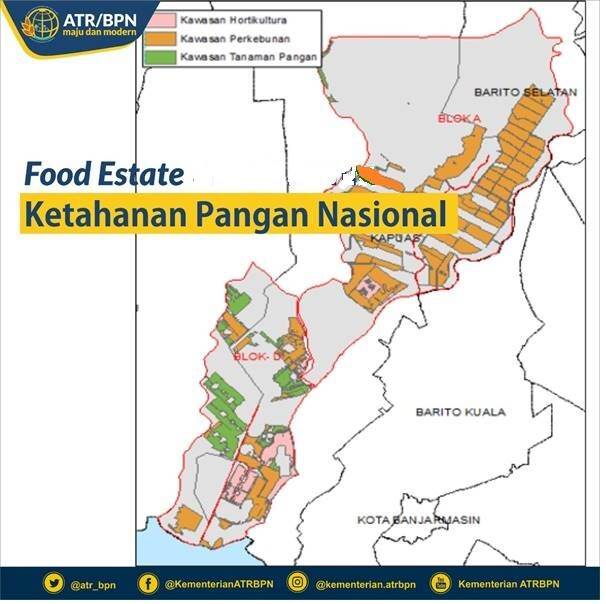Indonesia is opening a Food Estate in Central Kalimantan Province
In anticipation of food scarcity, the government of Indonesia is inventing in a ‘food estate’ development program that expectantly becomes a new food granary outside Java island. Led by the Ministry of Public Works and Housing (PUPR), Indonesia invited inputs particularly from Water Resources Professionals to build better irrigation in the future for a robust Food Estate Design.
What is a Food Estate?
Food estate is an integrated food development concept that includes inter alia agriculture, plantation, animal husbandry in one area. The planned location for the new food barn is in Pulang Pisau Regency, Central Kalimantan Province. The government claims that there is a conceivably 165,000 hectares land area, which is an alluvial soil and not peat, on the ex-Peatland Development (PLG) land in Central Kalimantan.

National Strategic Program
The Food Estate will become one of the National Strategic Programs (NSP) 2020-2024. The development work will kick start in 2020 until 2022, when the whole 165,000 hectares land area will be optimized completely for food production. This program is the second priority after the development of five National Tourism Strategic Areas (KSPN).
Besides PUPR, the Ministry of Agriculture and the Ministry of State-Owned Enterprises (SOEs) are involved. Their work division covers: PUPR Ministry develops basic facilities and infrastructure such as repairing irrigation canals around the area, both secondary and primary irrigation networks; while the Ministry of SOEs and the Ministry of Agriculture will develop the cultivation technology to produce better quality yields. It is expected that from one hectare of land, rice productivity will increase by two tons.
Land Preparation
Out of 165,000 hectares, 85,500 hectares is already of productive land category. While the remaining 79,500 hectares are shrubs so that only land clearing will be effected, and not rice field opening. Furthermore, out of 85,500 hectares of functional land, around 28,300 hectares are in good condition. While the other 57,200 hectares land needs a rehabilitation of irrigation networks with a total budget of Rp1.05 trillion. This rehabilitation is worth Rp497.2 billion and will be accomplished in stages during 2020-2022 with the following details: 2020 work will be covering an area of 1,210 hectares, in 2021 covering 33,355 hectares land, and in 2022 for the area of 22,655 hectares.
Connecting bridge
Next to rehabilitating the irrigation, the government is currently preparing the food estate office complex and pier. In the meantime PUPR has completed the construction of Tumbang Samba bridge that connects villages in Central Katingan District, Central Kalimantan Province. The bridge will not only open the isolated area in North Katingan and to complete the structure of the national road network from Central Kalimantan to West Kalimantan and vice versa; it will also support increased connectivity to the location of food estate development. The bridge with a total length of 843.2 meters will be the longest in the Province and equipped with connecting bridges and roads on both sides. The Tumbang Samba bridge will serve as an alternative to ferry services on Katingan River.
Benefits
From the Indonesian government, having a food estate will provide many direct or indirect benefits, such as to increase the added value of the local agricultural production, increase the absorption of agricultural labor up to 34.4%, with a solid logistic scheme it will lower food prices while abundant production, and open the potential for food exports to other countries.